IF YOU ARE LOOKING FOR COLORFUL BIRDS THERE CAN BE NO MORE A VISUAL TREAT THAN THE PINK-HEADED WARBLER.
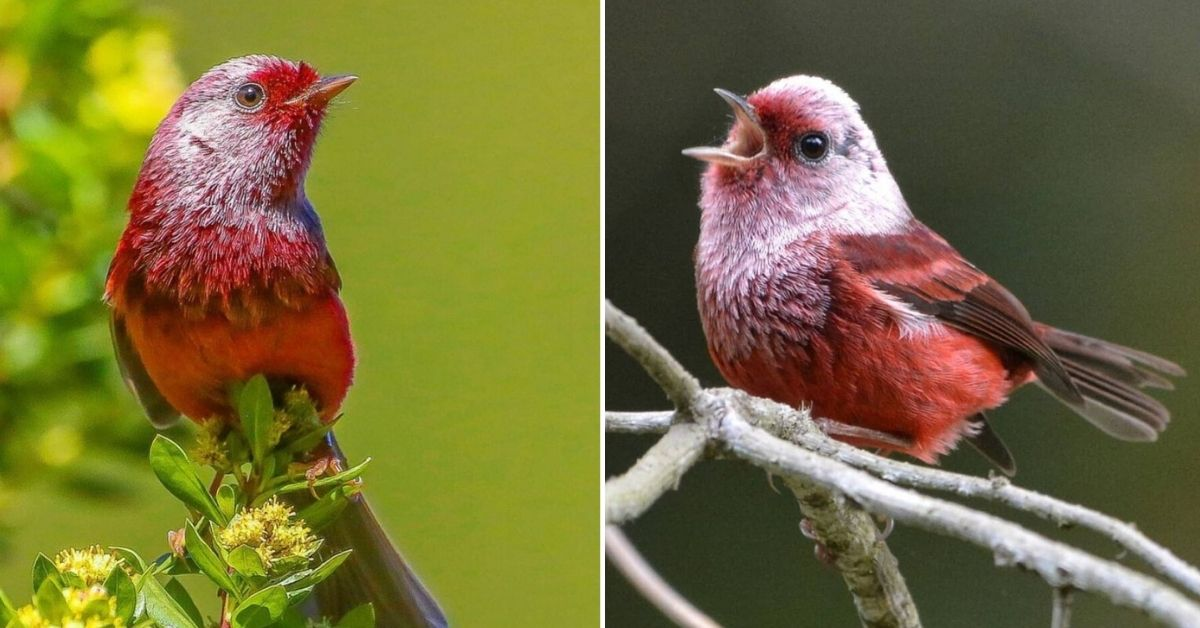
Adult birds are an eye-catching red topped off with a silvery-pink head and chest.
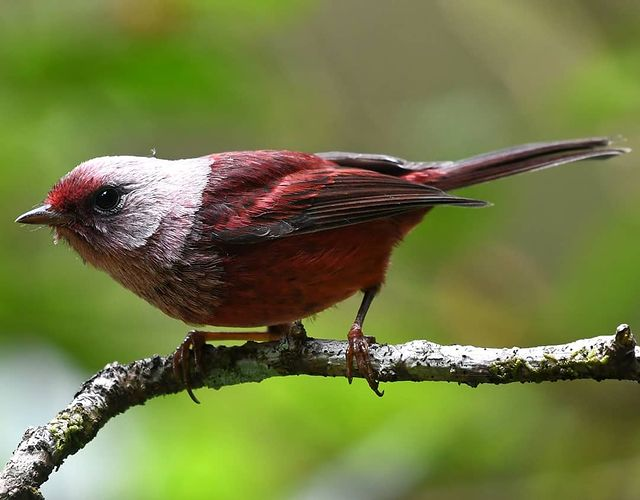
A post shared by Majo Lou (@birdlover_gt)
In Spanish, this species is known as cabeza plateada, “silvery head,” or chipe rosado, “rose-colored warbler.” Their species’ name is Versicolor, which is Latin for “changeable or various colors” and refers to the warbler’s head plumage. This species is closely related to the equally lovely Red-faced Warbler (Cardellina rubrifrons), however, they do have a more restricted range.
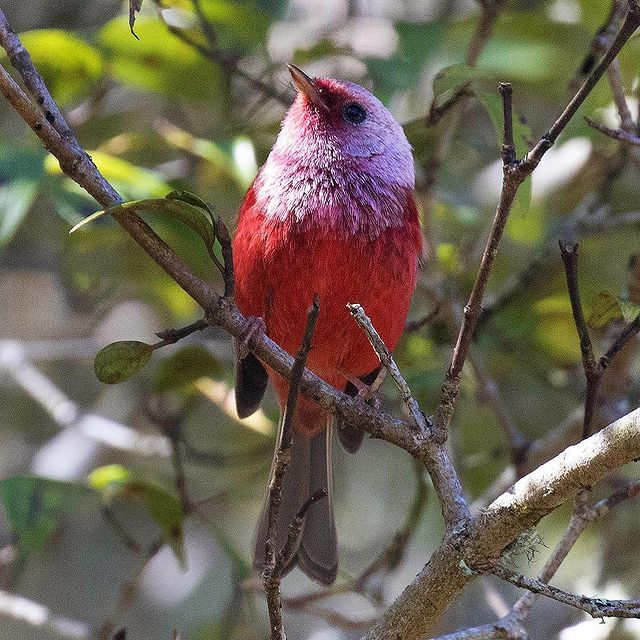
A post shared by Ryan Shaw (@rt_shaw)
Pink-headed Warblers are only found in the highlands of Guatemala and across the border in the Mexican state of Chiapas. Unfortunately, they are considered vulnerable to extinction by the International Union for Conservation of Nature (IUCN) due to ongoing habitat loss.
Ongoing volcanic eruptions are thought to have contributed to a decline in the population numbers of the Pink-headed Warbler.
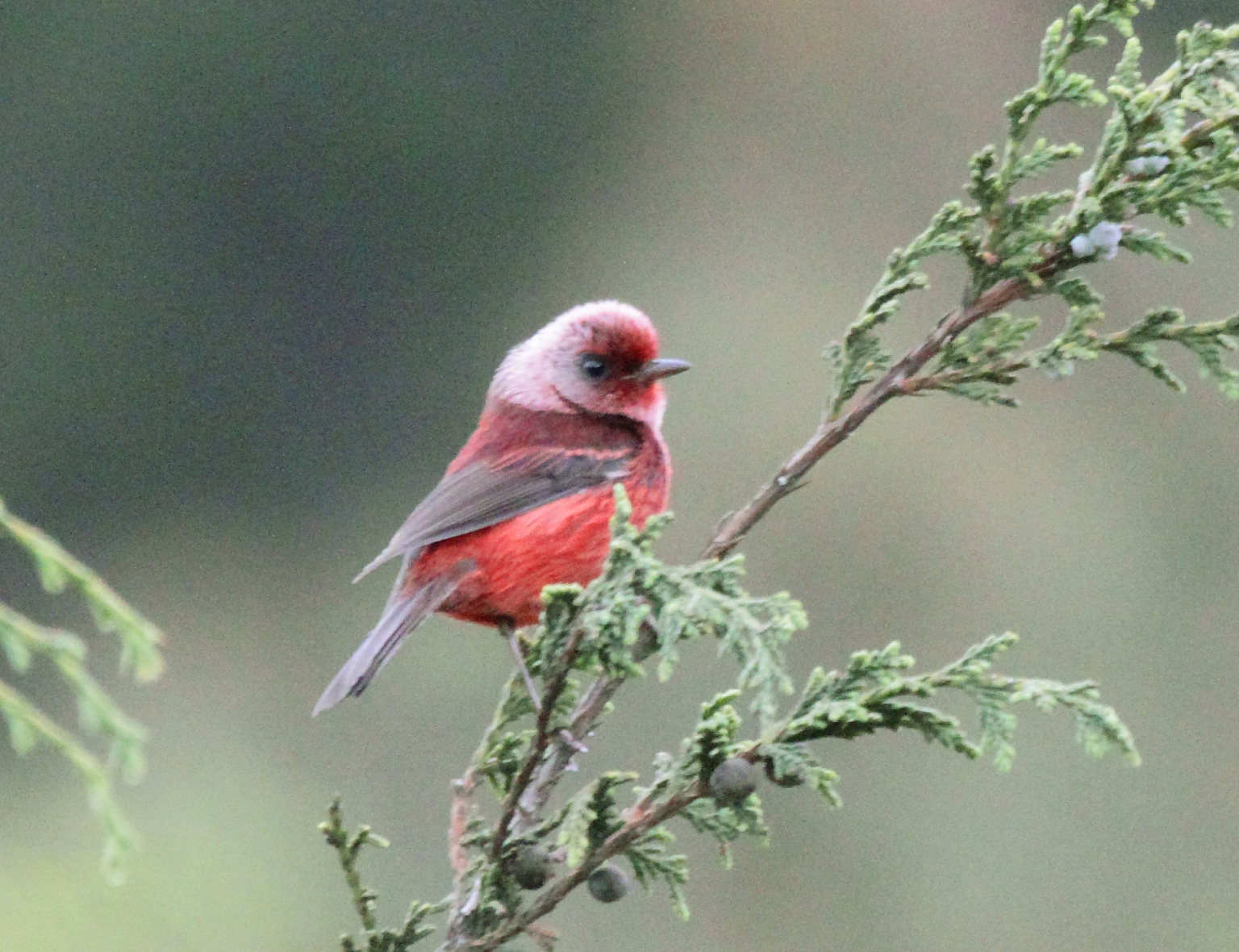
Photo Courtesy of Dominic Sherony / CC BY-SA 2.0
Very rare in Southern Mexico, Pink-headed Warblers are more frequently seen in Guatemala, more often in high-altitude pine-oak forests and evergreen cloud forests.
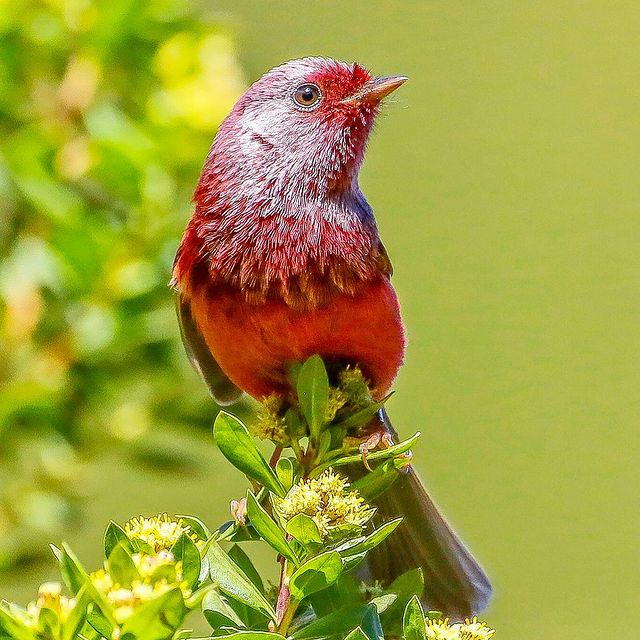
A post shared by Jose Miguel Pantaleon Inoa (@cimarronmayor)
Like visiting warblers such as the American Redstart and the Bay-breasted Warbler, the Pink-headed Warbler is an insect eater. Flitting through the leaves, gleaning insects from understory vegetation, and making aerial sorties snagging prey from the air. Pink-headed Warblers prefer foraging close to the ground, except during breeding season, when males may hunt at tree top level where they can be heard singing. These birds are non-migratory and territorial. Mating pairs look very similar and usually remain together year-round.
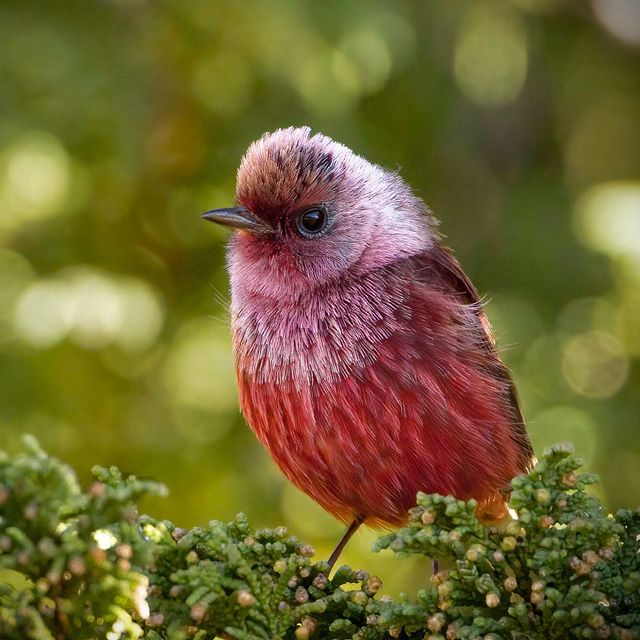
A post shared by David Mora Vargas (@david.birder)
A Species that Sits Tight: Female Pink-headed Warblers build their nest’s globe-shaped structures of pine needles on the ground, often on a steep bank. They take precautions to prevent potential predators from finding the nests by collecting pine needles away from the building site. Once the nest exterior is completed, the birds line it with fibrous materials and moss, creating a soft layer for two to four eggs. Unlike many other ground-nesting birds, such as Vesper Sparrow and Piping Plover, the female Pink-headed Warbler has no distraction display to deter predators, probably because she spends more than 70 percent of her time on the nest.
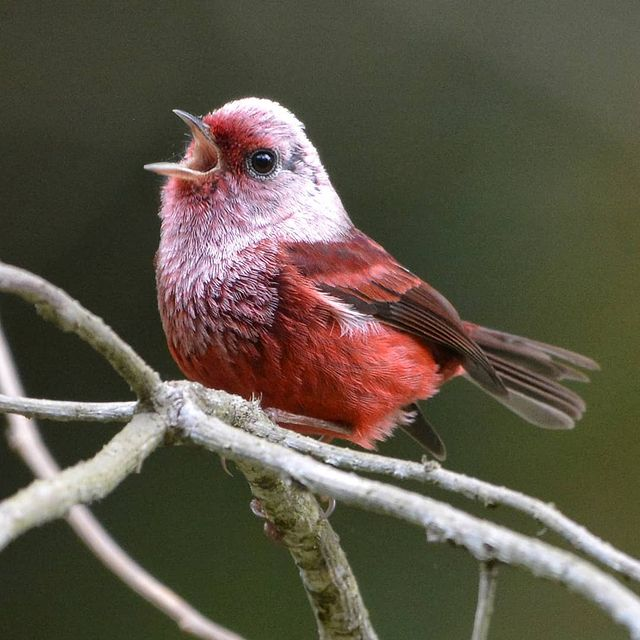
A post shared by Majo Lou (@birdlover_gt)
Advances in Warbler Conservation: In 2016, ABC worked with the Guatemalan conservation group FUNDAECO and the World Land Trust to create the Tapon Creek Nature Reserve. This protected area lies along the Caribbean coast and creates a lowland habitat corridor connecting two existing protected areas. It’s an area of high importance for bird conservation: Kentucky Warbler and more than 100 other neotropical migratory birds spend the winter or pass through this region.
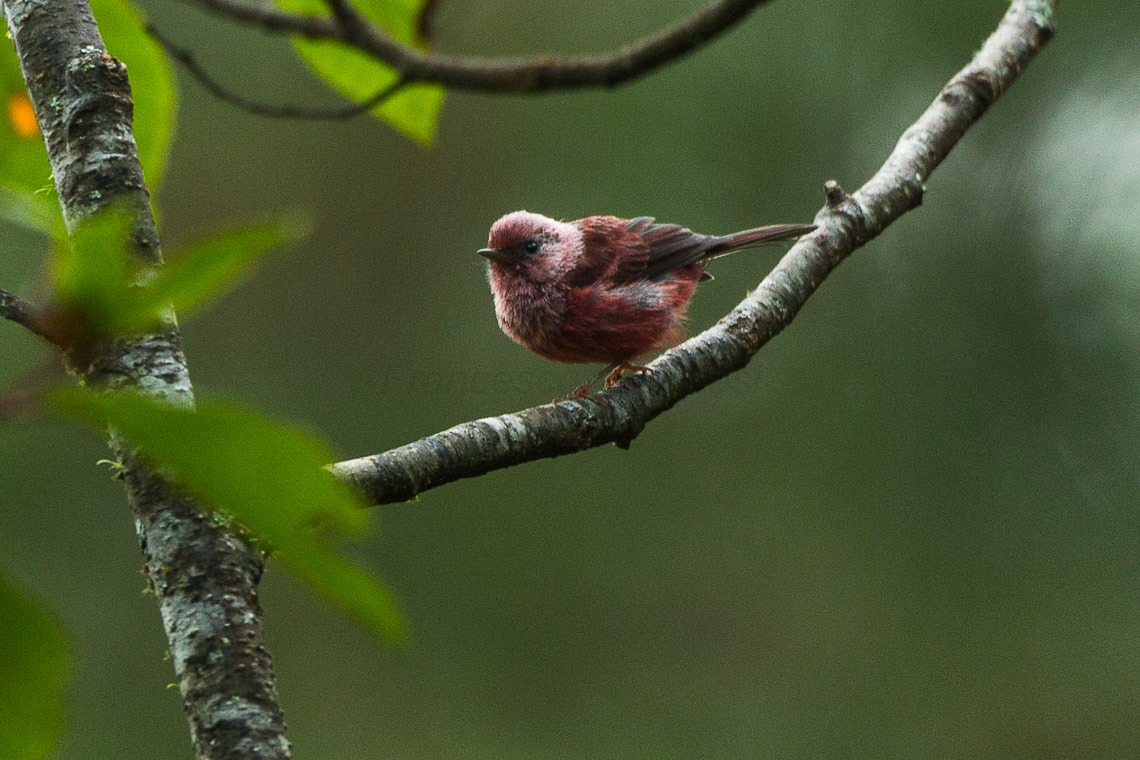
Photo Courtesy of Francesco Veronesi / CC BY-SA 2.0
FUNDAECO is currently developing a highland Guatemala program that includes conservation of the Pink-headed Warbler habitat. And American Bird Conservancy continues to work with FUNDAECO to conserve the Conservation Coast BirdScape, focusing on habitats for migratory birds such as Wood Thrush. Thankfully, there are still tens of thousands of flitting about, but population levels are on the decline due to habitat loss and conservationists are working to stem the problem before it becomes a crisis.
WATCH AND LISTEN TO THIS BIRD RIGHT HERE BELOW:
H/T Wikipedia – Creative Commons Attribution-ShareAlike License.
An Oddly Shaped, Unmistakable Bird, With An Exquisite, Captivating, Half Moon Crest – Meet The Guiana Cock-Of-The-Rock!
Please SHARE this article with all your bird-loving friends and family.





